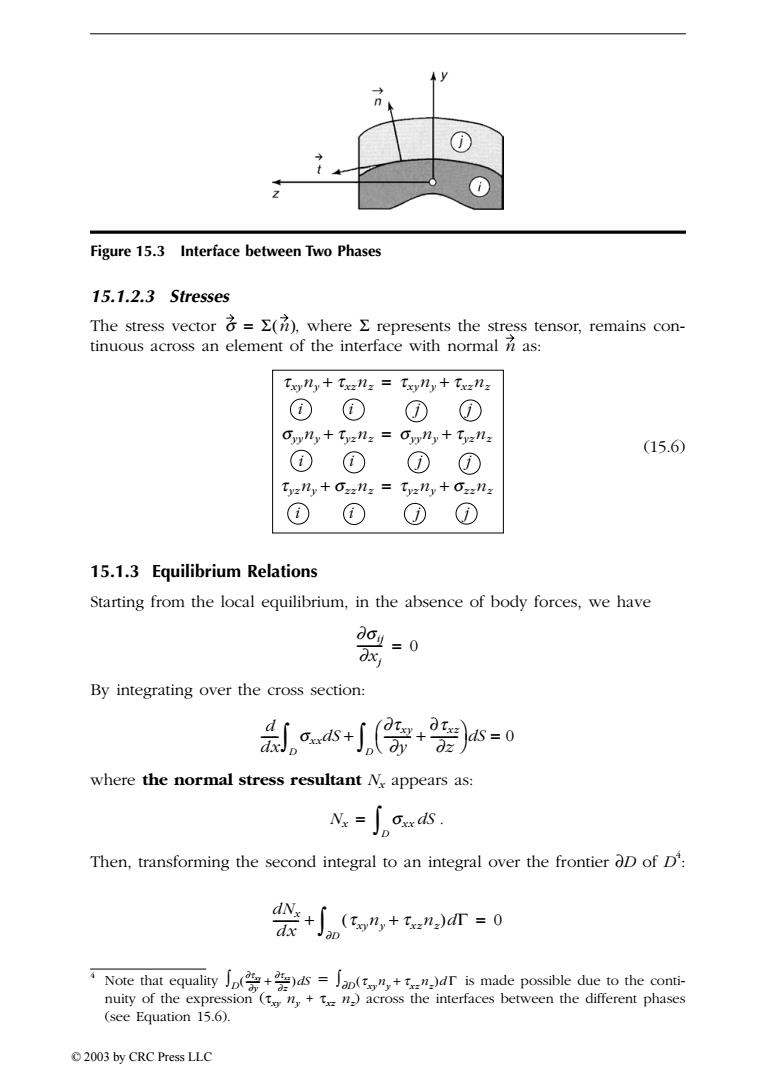正在加载图片...

n Figure 15.3 Interface between Two Phases 15.1.2.3 Stresses The stress vector=E(),where E represents the stress tensor,remains con- tinuous across an element of the interface with normal as: Txyny+Txznz Txyny+Txznz ① ① ① ① Oyny+Tyznz Oyny+Tyznz (15.6 ① ① ① ① Tyzny+Ozzn:Tyzny+Ozzn: 15.1.3 Equilibrium Relations Starting from the local equilibrium,in the absence of body forces,we have ∂oy=0 xj By integrating over the cross section: +(紧+是}s=0 where the normal stress resultant Nx appears as: N-Soud5. Then,transforming the second integral to an integral over the frontier aD of D': 袋+小+r=0 Note that equalitydsis made possible due to the conti- nuity of the expression (tn+tn)across the interfaces between the different phases (see Equation 15.6). 2003 by CRC Press LLC15.1.2.3 Stresses The stress vector , where S represents the stress tensor, remains continuous across an element of the interface with normal as: (15.6) 15.1.3 Equilibrium Relations Starting from the local equilibrium, in the absence of body forces, we have By integrating over the cross section: where the normal stress resultant Nx appears as: Then, transforming the second integral to an integral over the frontier ∂D of D4 : Figure 15.3 Interface between Two Phases 4 Note that equality is made possible due to the continuity of the expression (txy ny + txz nz) across the interfaces between the different phases (see Equation 15.6). s = S( ) n n txyny + txznz = txyny + txznz ii jj syyny + t yznz = syyny + t yznz ii jj t yzny + szznz = t yzny + szznz i i jj ∂sij ∂xj --------- = 0 d dx------ sxxdS ∂txy ∂y --------- ∂txz ∂z + --------- Ë ¯ Ê ˆ dS = 0 DÚ + DÚ Nx sxx dS . DÚ = ÚD ∂t xy ∂y ------ ∂t xz ∂z ( ) + ------ dS Ú∂D t xyny t + xznz = ( )dG dNx dx --------- txyny + txznz ( )dG ∂D Ú + = 0 TX846_Frame_C15 Page 288 Monday, November 18, 2002 12:30 PM © 2003 by CRC Press LLC